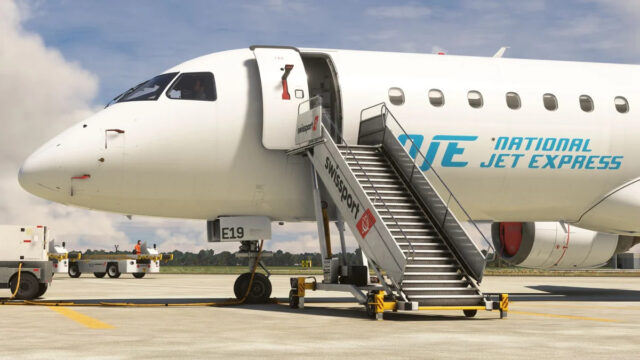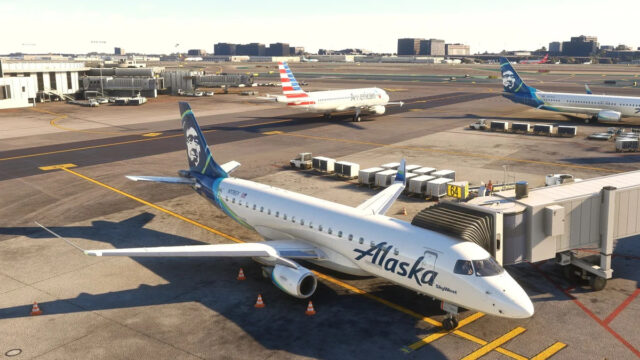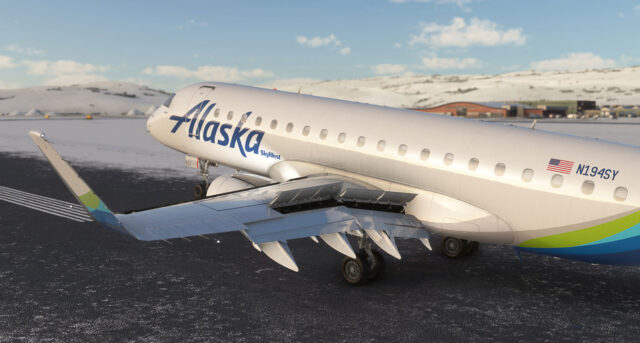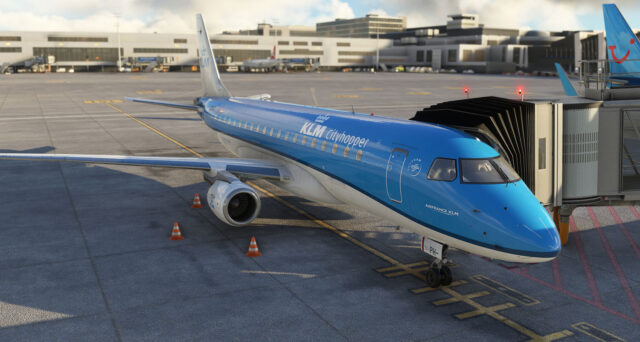
Aerosoft and Flightsim Studio AG have just released the much-anticipated update v0.9.25 for their E-Jets 170/175 and E-Jets 190/195 in Microsoft Flight Simulator. One of the standout features of this update is the introduction of a custom Autopilot with a rewritten lateral and vertical path-following logic. This marks a significant milestone as it sets the foundation for the full Custom Flight Management System/Autopilot (FMS/AP), which includes the highly awaited Vertical Navigation (VNAV) functionality. Although the new path tracking is currently applied to ILS approaches, it represents a crucial step towards enhancing the overall autopilot performance, promising a more stable approach behavior and opening the door for future features such as autoland.
Despite the concise changelog for this update, there’s a pivotal under-the-hood improvement disguised as “improved ILS behavior.” In reality, this improvement introduces a fundamentally new system for flying lateral and vertical paths. This proprietary code not only enhances ILS approaches but also serves as the groundwork for general flight plan tracking, irrespective of whether it involves ILS, RNAV approaches, enroute waypoints, or vertical descent profiles. With this update, the developers have established a solid foundation for the upcoming custom FMS, ensuring that the autopilot’s performance on ILS approaches will translate into reliable performance for VNAV and LNAV profiles in the future.
The update also brings several bug fixes, including addressing issues with elevator trim decal, MCDU highlight, MAG1 on MFD, MFD drift bug color, compass rotation direction and color, missing FO steer disconnect, and sun visor color. The changelog outlines engine sound adjustments, improvements in knob emissive texture, updated MCDU logic for FLEX Temp input, and various improvements in ILS behavior and Head-Up Display (HGS). Noteworthy additions include GSX profiles for E17x, liveries improvements for E190, and a change in EFB default flap selection for E19x. Overall, this update represents a crucial step forward in refining the E-Jets’ performance and paving the way for future enhancements.







